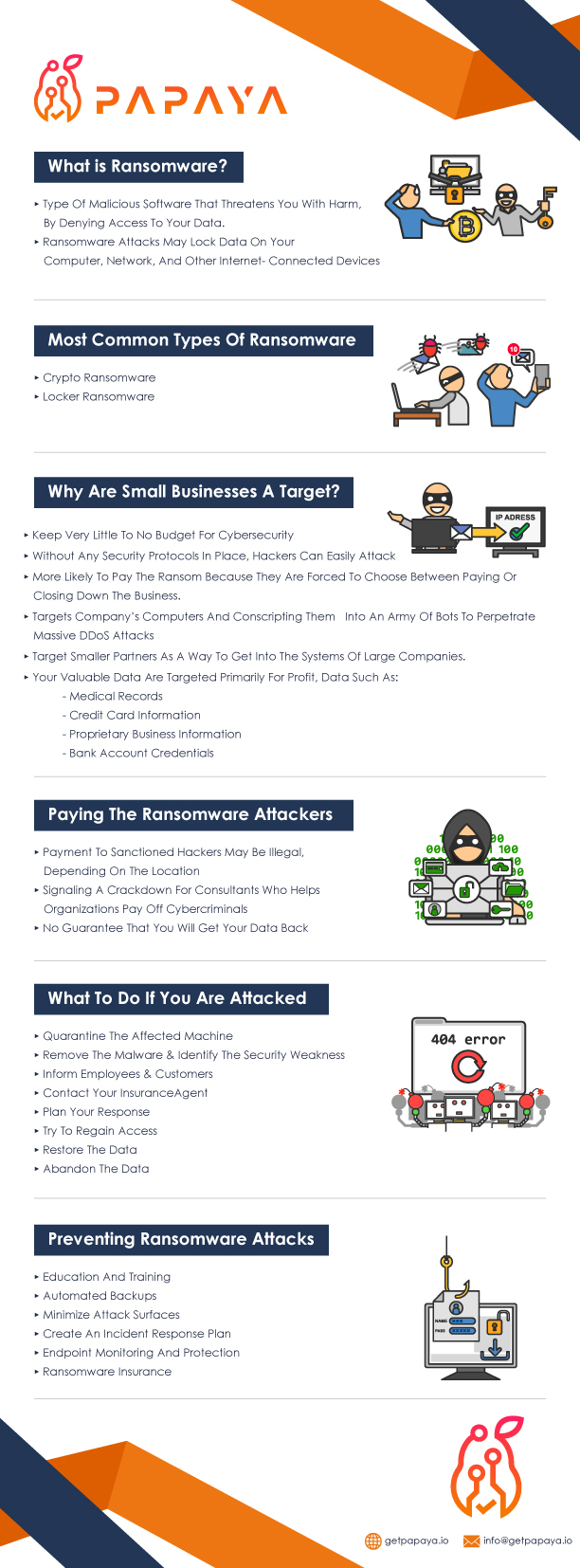

What is Ransomware?
- Type of malicious software threatens you with harm, by denying access to your data.
- Ransomware attacks may lock data on your computer, network, and other internet-connected devices
Most common types of ransomware
- Crypto ransomware
- Locker ransomware
Why are Small businesses a target?
- keep very little to no budget for cybersecurity
- Without any security protocols in place, hackers can easily attack
- more likely to pay the ransom because they are forced to choose between paying or closing down the business.
- Targets company’s computers, and conscripting them into an army of bots to perpetrate massive DDoS attacks
- Target smaller partners as a way to get into the systems of large companies.
- Your valuable data are targeted primarily for profit, data such as:
- medical records
- credit card information
- proprietary business information
- bank account credentials
Paying the ransomware attackers
- Payment to sanctioned hacker may be illegal, depending on location
- Signaling a crackdown for consultants who helps organizations pay off cybercriminals
- No guarantee that you will get your data back
What to do if you are attacked
- Quarantine the affected machine
- Remove the malware & identify the security weakness
- Inform employees & customers
- Contact your issuance agent
- Plan your response
- Try to regain access
- Restore the data
- Abandon the data
Preventing Ransomware Attacks
- Education and Training
- Automated backups
- Minimize attack surfaces
- Create an incident response plan
- Endpoint monitoring and protection
- Ransomware insurance
Ransomware is a common threat to most small businesses. It typically locks a small business’s system by concealing its files using encryption algorithms. It works when attackers demand payment from business owners for attackers to unlock the encrypted files. Aside from monetary loss due to ransom payments, there will also be possibilities of major technical issues and data loss. To ensure data protection, there’s massive importance in staying vigilant and investing in quality security measures such as antivirus programs, firewalls, user awareness programs, and awareness training.

